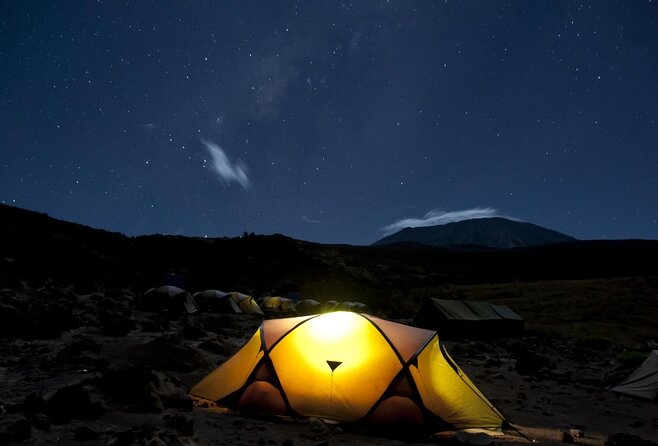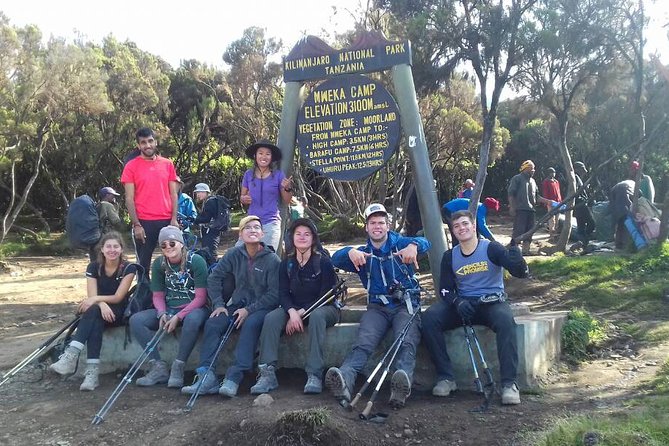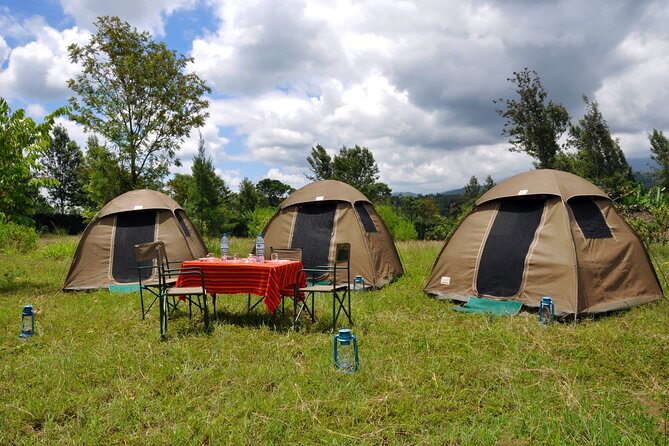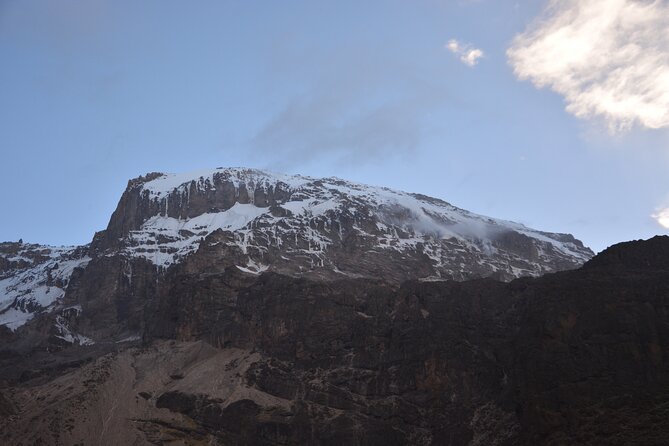The Kilimanjaro Umbwe Route is renowned for its sheer challenge, making it a prime destination for experienced trekkers seeking a true adventure. This demanding trail features steep ascents and dramatic landscapes, from lush rainforests to barren alpine deserts, with a total elevation gain exceeding 4,000 meters. While proper physical fitness, gear, and acclimatization are essential for success, those who conquer the Umbwe Route are rewarded with a unique wilderness experience complemented by rich cultural interactions with local guides and porters. So, if you’re ready to push your limits and learn about the captivating world of Kilimanjaro, the Umbwe Route awaits.
Key Points

- The Umbwe Route is one of the most challenging routes for climbing Kilimanjaro, featuring a steep ascent and technical difficulty requiring high physical fitness.
- Proper preparation, including physical fitness, gear, and acclimatization, is essential for a successful and safe Kilimanjaro expedition via the Umbwe Route.
- The Umbwe Route offers a unique wilderness experience, with diverse landscapes ranging from lush rainforests to barren alpine deserts.
- Thorough planning and logistics, including arranging flights, accommodations, and securing experienced guides, are crucial for a Kilimanjaro expedition on the Umbwe Route.
- The Umbwe Route is renowned for its steep and strenuous ascent, which tests the physical and mental fortitude of climbers, requiring strong fitness and determination.
Overview of Kilimanjaro’s Umbwe Route

The Umbwe Route is considered one of the most challenging and least crowded options for climbing Kilimanjaro. This route is known for its steep ascent, with a total elevation gain of over 4,000 meters.
Climbers on the Umbwe Route will experience a diverse range of landscapes, from lush rainforests to the barren alpine desert. The route is also known for its technical difficulty, requiring a high level of physical fitness and stamina.
Despite the challenges, the Umbwe Route offers a unique and rewarding experience for adventurous climbers seeking a more remote and challenging path to the summit of Kilimanjaro.
You can also read our reviews of more tours and experiences in Moshi.
Preparing for the Kilimanjaro Climb
Preparing for the Kilimanjaro climb requires careful planning and attention to detail. Climbers must ensure they’re physically fit, have the proper gear, and understand the route’s challenges. Acclimatization is crucial, as the high altitude can cause altitude sickness. Packing the right clothes, footwear, and equipment is essential for comfort and safety on the mountain.
| Essentials | Recommended | Optional |
|---|---|---|
| Hiking boots | Trekking poles | Camera |
| Base layers | Thermal underwear | Gaiters |
| Insulating jacket | Headlamp | Power bank |
Seeking guidance from experienced guides or joining a reputable tour operator can make the climb more manageable and enjoyable. Proper preparation is the key to a successful and safe Kilimanjaro expedition.
Highlights of the Umbwe Route

Starting from the forested lower slopes, the Umbwe Route quickly ascends through lush vegetation and rugged terrain, providing climbers with an exhilarating and challenging path to the summit of Kilimanjaro.
This route is known for its steep inclines and dramatic scenery, with hikers passing through diverse ecological zones, including dense forests, moorlands, and alpine deserts.
The route is considered one of the most difficult and strenuous on Kilimanjaro, but it offers a true wilderness experience and the opportunity to witness the mountain’s breathtaking landscapes up close.
With its demanding nature, the Umbwe Route is recommended for experienced trekkers with a high level of physical fitness.
Logistics of the Kilimanjaro Expedition
Organizing a Kilimanjaro expedition requires thorough planning and consideration of various logistical aspects.
Travelers must book their flights to Kilimanjaro Airport, where they’ll be met by the operator and transported to the starting point in Moshi, Tanzania.
The Umbwe Route itinerary includes 6 days of trekking, with meals provided throughout. Accommodations are in mountain camps, and the group size is limited to 8 participants to ensure a personalized experience.
Given the strenuous nature of the climb, a strong fitness level is essential. Climbers must also be aware of the health and safety precautions, as the route isn’t suitable for those with mobility issues or back problems.
The operator offers free cancellation up to 24 hours before the start.
Physical Challenges of the Umbwe Route
The Umbwe Route on Kilimanjaro is renowned for its steep and strenuous ascent, presenting a formidable physical challenge for even the most seasoned hikers.
The route’s relentless uphill climb, often reaching gradients of up to 45 degrees, requires tremendous endurance and leg strength. Climbers must be prepared to tackle long, grueling days of hiking, with the final push to the summit pushing the limits of physical and mental fortitude.
The high-altitude environment further compounds the difficulty, as the body must adapt to the decreasing oxygen levels. Only those with a strong fitness level and a determined spirit are likely to succeed on the Umbwe Route.
Packing List for the Kilimanjaro Climb

Preparing for the rigors of a Kilimanjaro climb requires careful attention to the packing list. Climbers must ensure they’ve the right gear to handle the diverse weather conditions and challenging terrain.
The essentials include:
-
Warm, layered clothing: Bring thermal underwear, thick socks, and a heavy jacket to combat the cold temperatures at higher altitudes.
-
Sturdy hiking boots: Invest in well-fitted, broken-in boots with good traction to provide support and stability during the trek.
-
Hydration and snacks: Pack plenty of water, energy bars, and other high-calorie, nutrient-dense foods to fuel the body throughout the strenuous climb.
Cultural Experiences on the Umbwe Route

Climbing the Umbwe Route on Kilimanjaro presents travelers with unique cultural experiences that enrich the overall expedition.
Along the way, climbers have the opportunity to interact with local Tanzanian porters and guides who are integral to the success of the trek. These individuals possess deep-rooted knowledge of the mountain’s terrain, flora and fauna, and traditional Chagga heritage.
Trekkers may also encounter local communities, offering insight into their distinctive way of life, customs, and the importance of Mount Kilimanjaro in their cultural identity.
These cultural touchpoints foster a greater appreciation for the region’s rich heritage and the people who call it home. Embracing these experiences can create lasting memories and a more holistic understanding of the Kilimanjaro climb.
Frequently Asked Questions About Kilimanjaro

Prospective Kilimanjaro trekkers often grapple with a range of questions as they prepare for the challenge.
The most common queries revolve around the difficulty level, necessary fitness, and best time to attempt the climb.
The Umbwe route is considered one of the more challenging paths to the summit, requiring a strong physical fitness level.
Trekkers should expect long, steep ascents and be prepared for the effects of high altitude.
As for timing, the dry seasons of January-March and June-October are ideal, offering the best weather conditions for the grueling climb.
- What’s the difficulty level of the Umbwe route?
- How physically fit do I need to be for this trek?
- When is the best time of year to attempt the Kilimanjaro climb?
Frequently Asked Questions
What Is the Best Time of Year to Climb Kilimanjaro?
The best time to climb Kilimanjaro is typically during the dry seasons of January-March and June-October when weather conditions are more favorable for the summit attempt. Climbers should consider factors like temperature, precipitation, and crowds when planning their expedition.
How Can I Acclimatize to the High Altitude?
To acclimatize to high altitude, climbers should gradually increase their exposure, stay hydrated, rest frequently, and adjust their pace. Supplemental oxygen and medication can also help manage altitude sickness symptoms. Proper preparation is key for a safe and successful climb.
What Are the Most Common Injuries on the Umbwe Route?
The most common injuries on high-altitude climbs include altitude sickness, frostbite, and sprains. Hikers must be prepared to manage these risks through proper acclimatization, gear, and first-aid. Consulting a guide is crucial for safety on challenging routes like the Umbwe.
What Is the Average Success Rate for the Umbwe Route?
The average success rate for the Umbwe route on Kilimanjaro is approximately 50-60%. This route is considered one of the most challenging, with steep and difficult terrain that can be physically demanding for climbers.
Can I Bring My Own Equipment or Is It Provided?
The operator typically provides the necessary climbing equipment, but climbers may bring their own gear if they prefer. Climbers should confirm the specific equipment included and any personal items they need to bring for the Kilimanjaro Climbing Umbwe Route.
Recap
The Kilimanjaro Umbwe Route is a challenging yet rewarding trek for experienced adventurers. Proper preparation, equipment, and acclimatization are essential to navigating the steep ascents, diverse landscapes, and high-altitude conditions. Climbers who are up to the task will be rewarded with a unique wilderness experience and cultural exchange, making the Umbwe Route a truly unforgettable journey to the roof of Africa.
More Tour Reviews in Moshi
- Private Tour to Materuni Waterfalls, Coffee Tour, Kikuletwa Hot Springs & Maasai
- 7-day Best of Tanzania Lodge Safari
- 4 Days Wildlife Tanzania Adventure
- Affordable Short Tanzania Safari (2 Days Camping Safari)
- 6 Days Mount Kilimanjaro Climbing via Rongai Route
- 8 Days Tanzania Adventure Tented Camps Safari
Not for you? Here's more things to do in Moshi we have recnetly reviewed
- 7 Best 3 Day Tours In Moshi
- 14 Best 4 Day Tours In Moshi
- 2 Best Private Car With Driver Services In Livingstone
- 4 Best Private Car With Driver Services In Moshi
- 15 Best Coffee Tours And Tastings In Moshi
- Marangu Route 6 Days 5 Nights/Kilimanjaro Climb
- Private 5-Days Serengeti Trails With Kojuu Safaris
- Full Day Private Safari – Tarangire National Park
- 9 Days 8 Nights Walking Safari
- Mt Kilimanjaro Climbing; 6 Days Machame Route
- Kilimanjaro Climb – 6 Days Marangu Route
- 5 Days African Safaris
